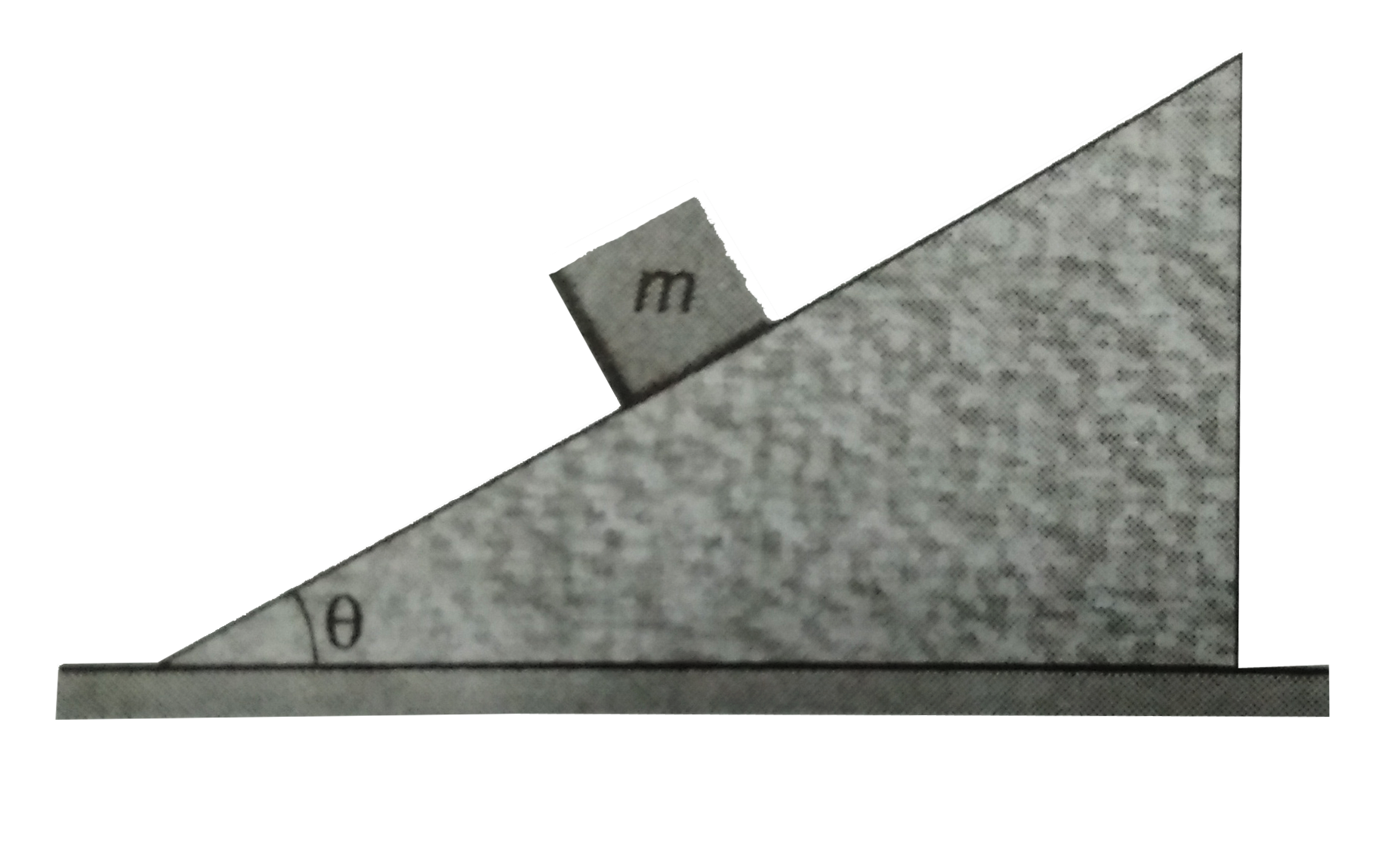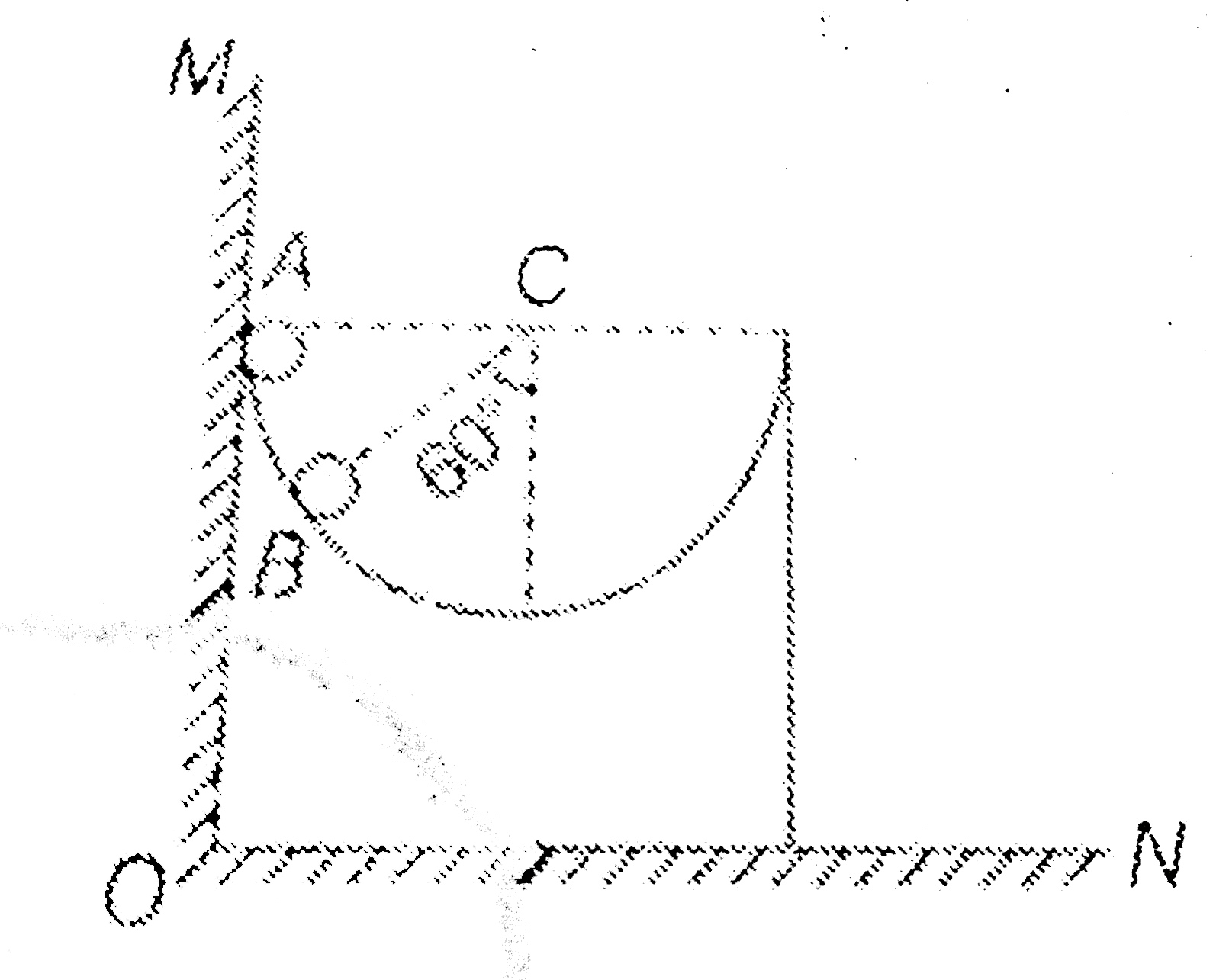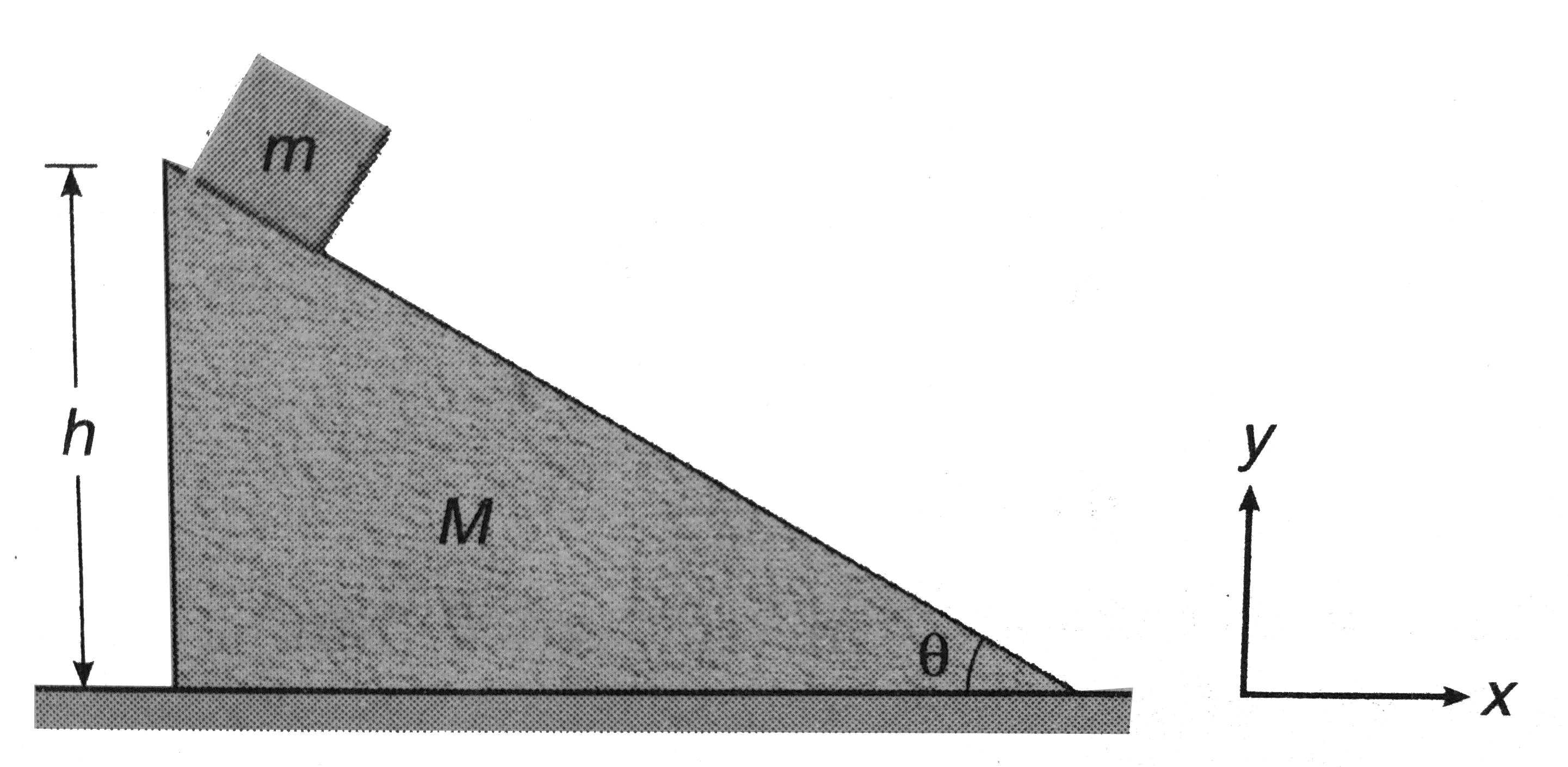A block of mass 1 kg is released on wedge from position M as shown in figure (Neglect friction everywhere). The force exerted by vertical wall W on wedge, when the block is at position N is 152√P newton, then what is the value of P (Take g = 10 m/s2)?

The correct Answer is:3
ρgh=12ρV21
Δp+ρgh=12ρV22
and V2=2V1
∴ΔP+ρgh=2ρV21=4ρgh⇒Δp=3ρgh=3×105 Pascal = 3 atm
Topper's Solved these Questions
Similar Questions
A block of mass m is at rest on a rought wedge as shown in figure. What is the force exerted by the wedge on the block?

View SolutionA block of mass m slides down on inclined wedge of same mass m as shown in figure . Friction is absent everywhere . Acceleration of centre of mass of the block and wedge is

View Solution
Knowledge Check
A ball of mass 1 kg is released from position A inside a wedge with a hemispherical cut of radius 0.5 m as shown in figure. The force exerted by the vertical wall OM on wedge, when the ball is in position B is (neglect friction everywhere) (Take g=10m/s2)
 A10 NB5√3NC15√32ND15 N
A10 NB5√3NC15√32ND15 NA ball of mass m is released from A inside a smooth wedge of mass m as shown in figure. What is the speed of the wedge when the ball reaches point B?
 A(a) (gR3√2)1/2B(b) √2gRC(c) (5gR2√3)1/2D(d) √32gR
A(a) (gR3√2)1/2B(b) √2gRC(c) (5gR2√3)1/2D(d) √32gRA block of mass m is at rest on wedge as shown in figure. Let N be the normal reaction between two and f the force of friction, then choose the wrong option.
 AN=mgcosθBNcosθ+fsinθ=mgCNsinθ=fcosθDNone of these
AN=mgcosθBNcosθ+fsinθ=mgCNsinθ=fcosθDNone of these
A block of mass m is released from a wedge of mass m as shown in figure . Find the time taken by the block to reach the end of the wedge.

View SolutionA block of mass m, is kept on a wedge of mass M, as shown in figure such that mass m remains stationary w.r.t. wedge. The magnitude of force P is

View SolutionA block of mass 2kg is released from rest on a rough inclined ground as shown in figure. Find the work done on the block by.
 .
.
(Take g10m/s2).
View SolutionA block of mass 6 kg is kept on rough surface as shown in figure. Find acceleration and friction force acting on the block. (Take g=10m/s2)

View SolutionA block of mass m is released from the top of a wedge of mass M as shown in figure. Find the displacement of wedges on the horizontal ground when the block reaches the bottom of the wedges. Neglect friction everywhere.

View Solution